We see a way to save over 14,000 hours
of manual data handling time per year in a Cell Line Development Department

We see a way to identify high producing cell lines in <15 minutes
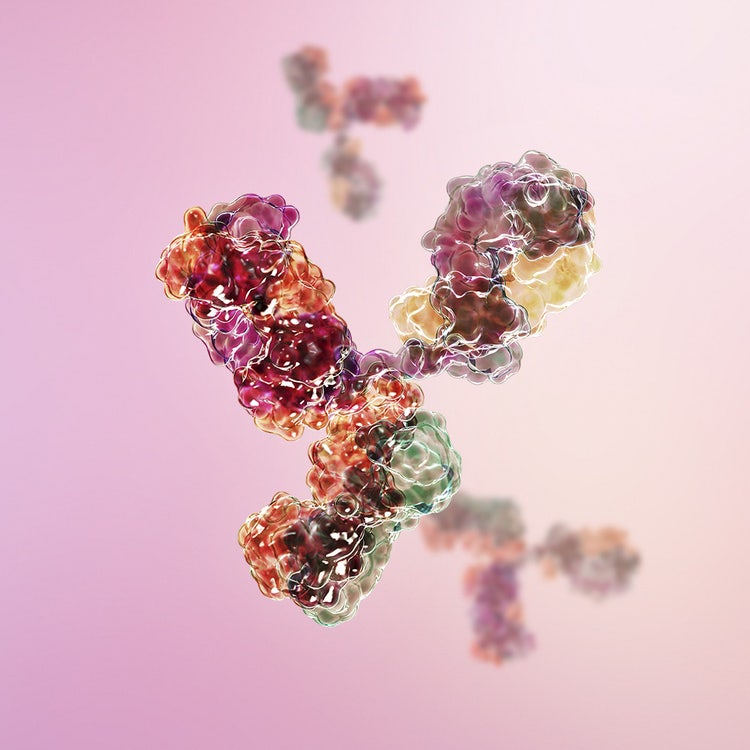
We see a way to access multidimensional data in minutes instead of weeks
The Intabio ZT system couples icIEF separation and UV detection with high resolution mass spectrometry on the ZenoTOF 7600 system
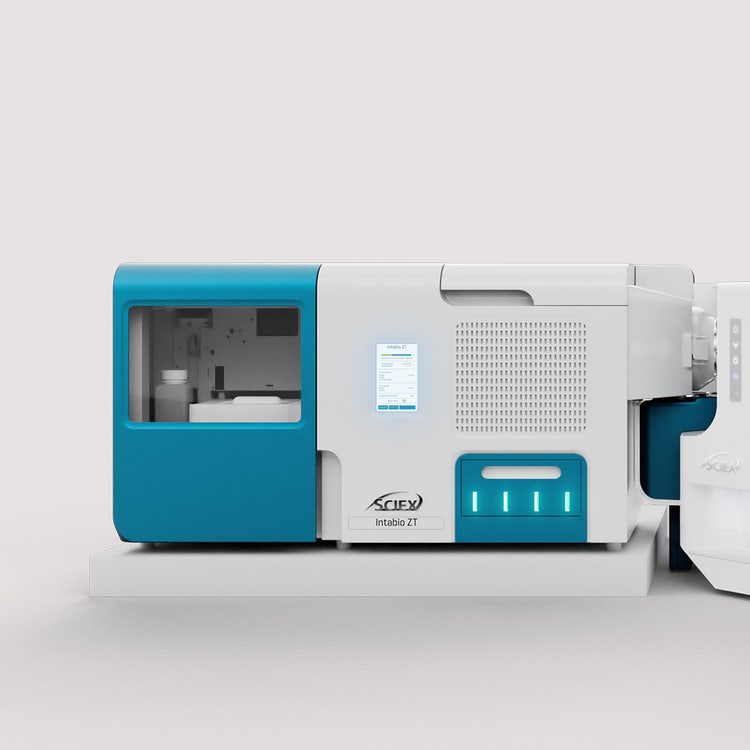
Cell Line Development
Why It Matters
Leverage a partner with an extensive portfolio and accelerate your Cell Line Development
Antibodies are proteins derived from clones of engineered mammalian cell lines and classified as a recombinant protein-based therapy. Antibody-based drugs, including monoclonal antibodies (mAbs), bispecific antibodies, trispecific antibodies, antibody fragments and antibody-drug conjugates (ADCs), are therapeutic proteins changing how we treat cancer and autoimmune diseases.
Cell line development (CLD) is no simple task. Establishing cell lines is fraught with challenges, including identifying the right host cell, stable cell line generation and clone selection, to name a few. Putting lifesaving therapeutic products, such as a targeted mAb, on the market requires years of drug discovery research, development, clinical trials and scaling up for commercialization.
The Life Sciences companies of Danaher support biopharma and service providers in their endeavor to accelerate cell line development for antibody and recombinant protein production with its comprehensive platform of best-in-class science and technology companies. We recognize the necessity for solutions that eliminate bottlenecks faster and aim to address this with our extensive instrument, software and services portfolio.
Customer Success Story
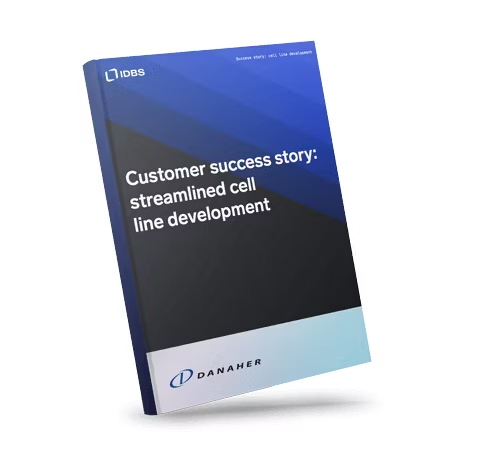
Customer Success Story: Implementation of Digital Workflows for Efficient Cell Line Development
Reduce the time to create cell line development reports by 50%
After implementing IDBS’ digital workflows for structured data capture, the Customer calculated actual time savings of over 14,000 resource hours per year. The time to generate a final cell line development report was calculated to be two to three weeks, which is a 50% reduction.
The Process
The Cell Line Development Workflow
One lab, three paths to faster cell line development outcomes
Resources
Resources for Cell Line Development
Method validation and references
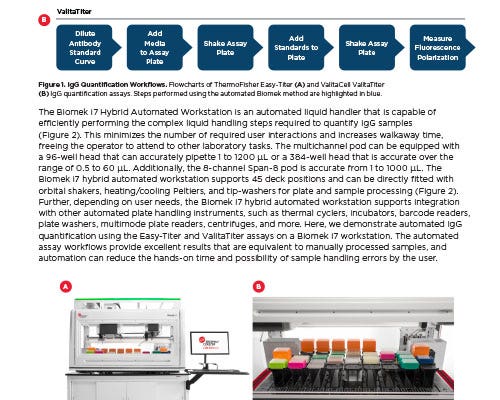
Beckman Coulter Life Sciences
Automation of IgG Quantification using the Biomek i7 Hybrid Automated Workstation
Application Note
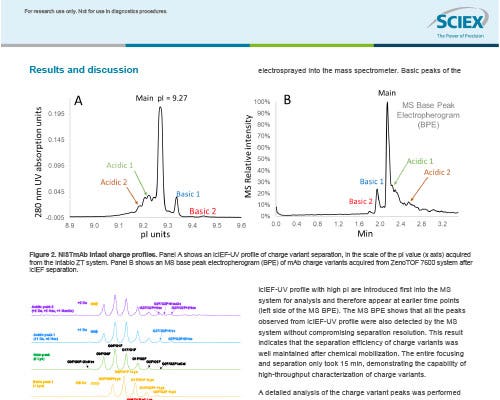
SCIEX
Direct and rapid multi-attribute monitoring of intact monoclonal antibodies by icIEF-UV/MS
Application Note
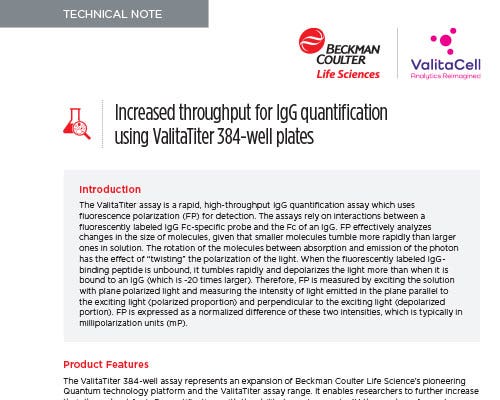
Beckman Coulter Life Sciences
Increased throughput for IgG quantification using ValitaTiter 384-well plates
Scientific and Technical Report
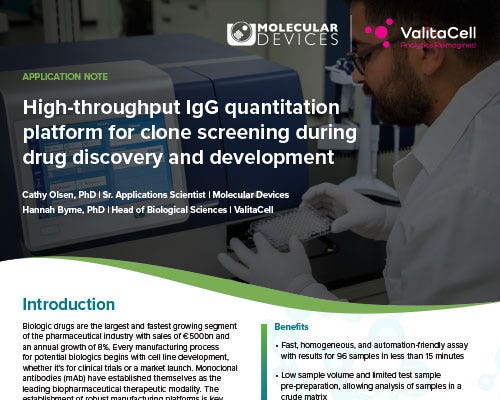
Molecular Devices
High-throughput IgG quantitation platform for clone screening during drug discovery and development
Application Note
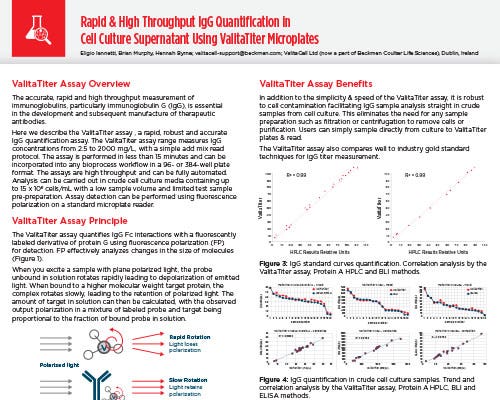
Beckman Coulter Life Sciences
Rapid & High Throughput IgG Quantification in Cell Culture Supernatant Using ValitaTiter Microplates
Poster
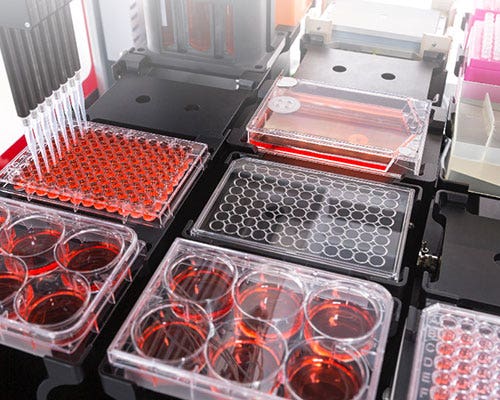
Danaher
A Novel Approach Holds Promise for Gaining Capacity: Blueprint Your Cell Lines Prior to Scale-up
Article
Product Spotlight
Intabio ZT System
Comprehensive charge variant analysis made simple
The Intabio ZT system couples icIEF separation and UV detection with high resolution mass spectrometry on the ZenoTOF 7600 system.
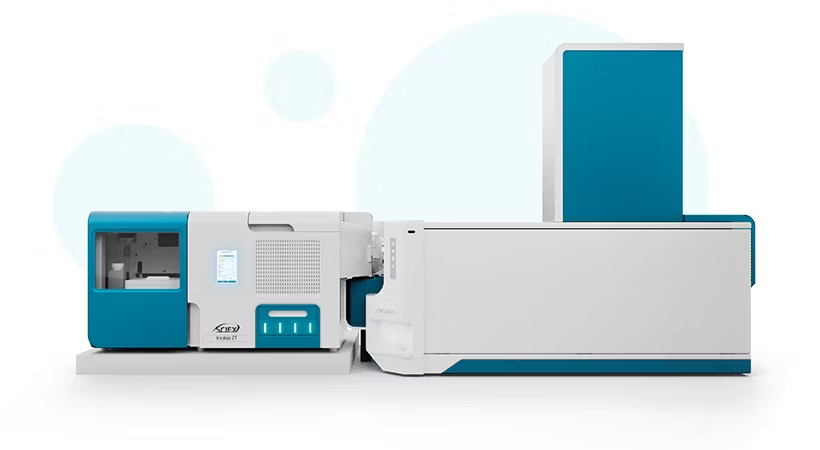
FAQs
What is cell line development, and why is it important?
Cell line development (CLD) is the process of bioengineering cells or cellular expression systems to stably express and manufacture biotherapeutics or biological products such as vaccines, monoclonal antibodies, recombinant proteins and enzymes. CLD ensures consistent quality and output for products used by multiple fields, including medicine, clinical research, diagnostics, life sciences, agriculture, forensics and industry.
How long does it typically take to develop a stable cell line?
While producing a stable cell line requires multiple variables, the total time can range from 6 to 12 months. Processes like transfection, cloning, stability studies, assay development and scale-up require attention to detail, are generally lengthy, labor-intensive, or can require optimization, contributing to the overall timeline.
Danaher Life Sciences operating companies can help identify high-producing cell lines within 15 minutes & save over 14,000 hours in stable cell line development with their portfolios of instruments, software and services.
What are the challenges faced during cell line development?
Though cell line development has many advantages, the process comes with challenges.
-
It is a time-consuming process. Process mistakes or optimization can add weeks or months, which impacts other projects.
-
It is labor-intensive. A lot of effort goes into maintaining a sterile environment throughout the process. Screening, identifying, monitoring, characterizing cell lines and maintaining data integrity requires a coordinated effort.
-
Process scale-up is not always linear. Sometimes the selected clone(s) do not perform as expected, which can increase time and costs.
Danaher Life Sciences operating companies can help address these cell line development challenges with their portfolios of instruments, software and services.
How are cell lines authenticated and characterized?
Cell line authentication and characterization can be done using a battery of test methods. Genomic sequencing and PCR-based methods are commonly employed. Functional tests and immunophenotyping are also performed. Data is then compared against known databases with previously authenticated cell lines for confirmation.
What is stable cell line development?
Stable cell line development results in a genetically stable clone with an integrated transgene passed down to all subsequent daughter cells. Stable cell lines are crucial for drug research, screening, and manufacturing therapeutic proteins and biologics.
What are the advantages of using an established cell line over primary culture?
In research, established cell lines offer the following advantages over primary cultures:
-
Optimized costs and timelines
-
Ease of use
-
Availability of samples
-
Reduced dependency on human or animal tissue
- Reproducibility of results
What is the importance of cell line characterization?
Proper cell line characterization is crucial to avoid using wrongly identified or contaminated cell lines, resulting in inaccurate research outcomes and wasting effort, cost and time. International regulatory agencies like WHO, FDA, ICH and EMA have well-defined compliance requirements and procedures for cell line characterization in all cell banks used in biologics, therapeutic research and manufacturing.